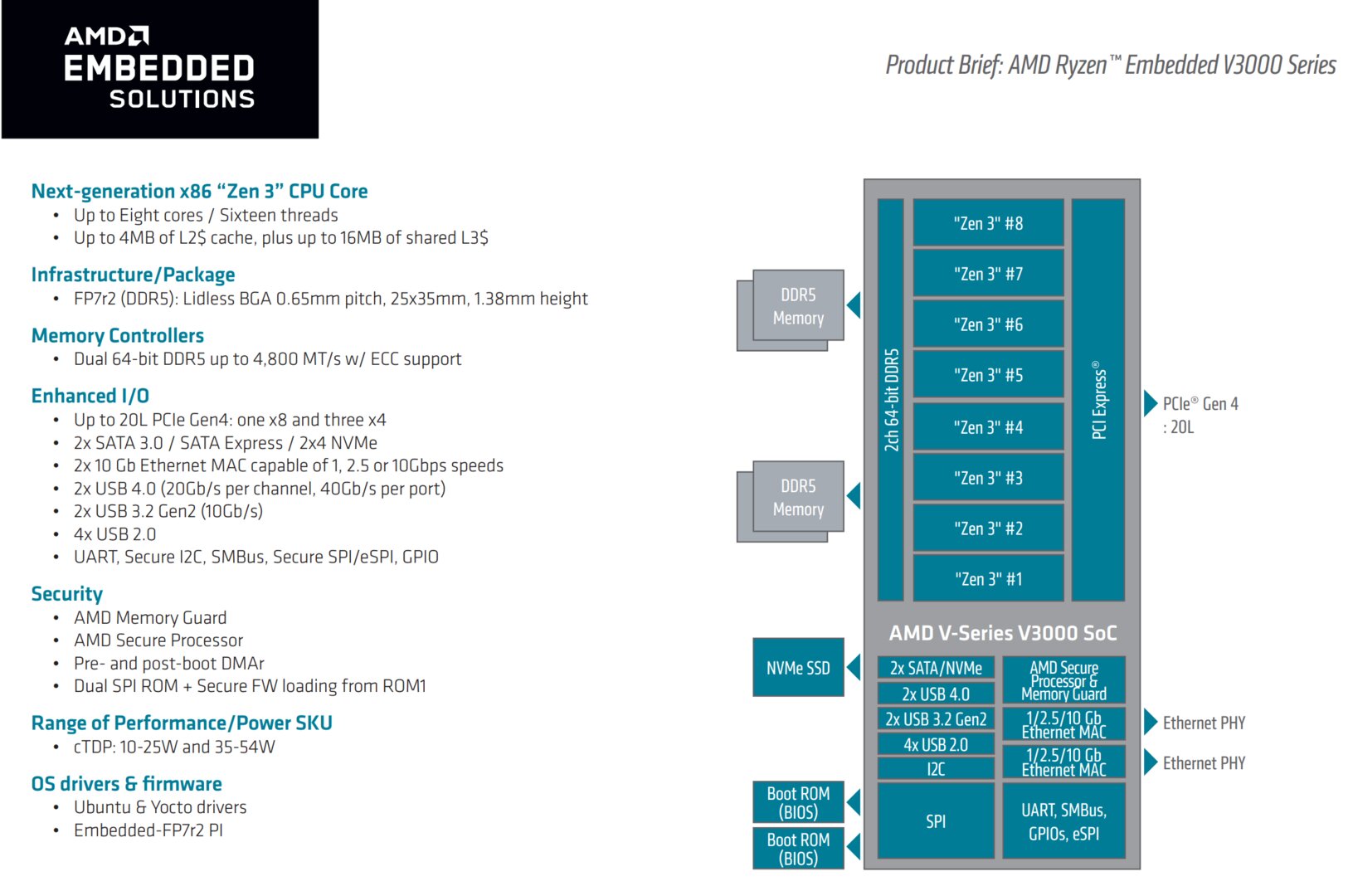In parallel with today's market launch of the Ryzen 7000 CPUs for consumers, AMD is introducing new embedded CPUs for industry. However, the Ryzen Embedded V3000 series is not yet based on Zen 4, but on the Zen 3 architecture. Nevertheless, DDR5 RAM is supported. Contrary to expectations, there is no integrated graphics unit.
The latter is a bit of a surprise, because the first rumors suggested an integrated RDNA 2 GPU. But this is not the case. The Ryzen Embedded V3000 do not offer a GPU and are therefore not APUs, unlike their predecessors in the Ryzen Embedded V2000 series. SoC in BGA package
The five Ryzen Embedded V3000 presented by AMD today use four to eight Zen 3 cores, depending on the model. Without a GPU, they are reminiscent of the Ryzen 5000 from the desktop segment, but instead of DDR4, DDR5 RAM is now supported with up to 4,800 MT/s. The configurable TDP classes range from 10 – 25 watts to 35 – 54 watts. Each CPU, or rather each system-on-a-chip (SoC), also offers 20 PCIe 4.0 lanes, USB 4.0 and a 10 GbE network in a double pack. The maximum turbo clock of 3.8 GHz (probably for one core) is identical for all models.
 AMD Ryzen Embedded V3000 (Image: AMD)
AMD Ryzen Embedded V3000 (Image: AMD)All models are manufactured in BGA format and are used thus soldered directly onto the motherboard. AMD names the areas of storage and networking as areas of application. OEMs and ODMs are to be supplied with the new CPUs with immediate effect.
Ryzen Embedded V3000 in detail
The V3C48 is the spearhead. Its eight cores work at 3.3 GHz in the base with a maximum TDP of 54 watts. The L2 cache is 4MB while the L3 cache is 16MB. The V3C18I offers the same equipment, but with a significantly reduced base clock of only 1.9 GHz for a maximum TDP of 25 watts. The V3C18I is a special model that is the only one designed for a temperature range of -40 °C to +105 °C. According to the specification, all others work at 0 °C to 105 °C.
The V3C44 offers only half as many cores with the highest base clock of 3.5 GHz at a maximum of 54 watts . Its counterpart in the 25-watt class is called the V3C14 and only works at 2.3 GHz. The fifth in the group is the V3C16, which is the only one with six cores and 12 threads. Its base clock is a low 2.0 GHz with an equally low 25 watts.
The platform should last for a long time so that companies can work with it for just as long: AMD wants to keep the V3000 available for up to 10 years. Linux support with drivers for Ubuntu and Yocto is also promised. In terms of security, AMD lists the features Memory Guard against unauthorized memory access and Platform Secure Boot as protection against firmware attacks.
More information is available on the product pages and a data sheet (PDF) .